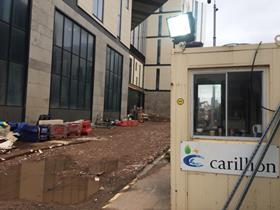Public spending watchdog says it could take years to know final cost
Carillion’s liquidation is set to cost the public £148m.
In an investigation into the government’s handling of the collapse of Carillion released today, the National Audit Office (NAO) said the public purse was set to foot the figure for the firm’s collapse.
But the watchdog also said it could take years to establish the final cost of the failure, with wider costs to the economy, Carillion’s customers, staff, the supply chain and creditors expected.
The report said the £148m would be covered by the £150m the Cabinet Office had already provided to help finance the cost of liquidation.
The report also laid out the estimated costs of public bodies’ contingency plans in the event of Carillion’s liquidation.
In all, 26 public groups provided the plans, with just 10 costing preferred options.
The total cost of plans laid out by these bodies was £238m, with almost £147m of this attributable to Network Rail.
But the rail authority said this was a worst case scenario and anticipated the cost would be significantly lower.
Amyas Morse, the head of the NAO, said: “When a company becomes a strategic supplier, dependencies are created beyond the scope of specific contracts.
“Doing a thorough job of protecting the public interest means that government needs to understand the financial health and sustainability of its major suppliers, and avoid creating relationships with those which are already weakened. Government has further to go in developing in this direction.”
Meg Hillier, chair of the Public Accounts Committee, said the investigation had thrown up a number of issues which her committee would explore as part of a strategic supplier inquiry later this month.
The investigation explored five areas: Carillion’s role in the market for government services, Cabinet Office’s monitoring of the firm, contingency plans for Carillion’s failure, government’s response to Carillion’s request for support and the contractor’s liquidation.
Timeline of government actions in relation to Carillion’s collapse
- 10 July 2017: Carillion’s first profit warning.
- 20 July: Government contingency planning began. The process continued throughout 2017.
- 14 September: Eight officials from the Cabinet Office and UK Government Investments gained access to internal financial information on Carillion such as cash flow forecasts.
- 29 September: Advance warning of the second profit warning prompted the Cabinet Office to express forcefully to Carillion its view that the business has not been open in the past about the seriousness of its position.
- 29 November: Cabinet Office wrote to Carillion to say that its Commercial Relations Board had provisionally raised Carillion’s rating from red to its highest rating, ‘high risk’.
- 15 December: Cabinet Office decided not to rate Carillion as ‘high risk’ as it did not want to risk damaging Carillion’s attempts to improve its finances.
- 31 December: First formal request by Carillion for financial support, deferral of taxes, help in restructuring its pensions liabilities and immunity from penalties arising from regulatory investigations
- 11 January 2018: The chief executive of the civil service, the chancellor and the minister for the Cabinet Office approved the option of a trading insolvency.
- 14 January: Cabinet Office informed Carillion it would not provide support.
- 15 January: Carillion’s directors applied to the High Court for liquidation.





























No comments yet